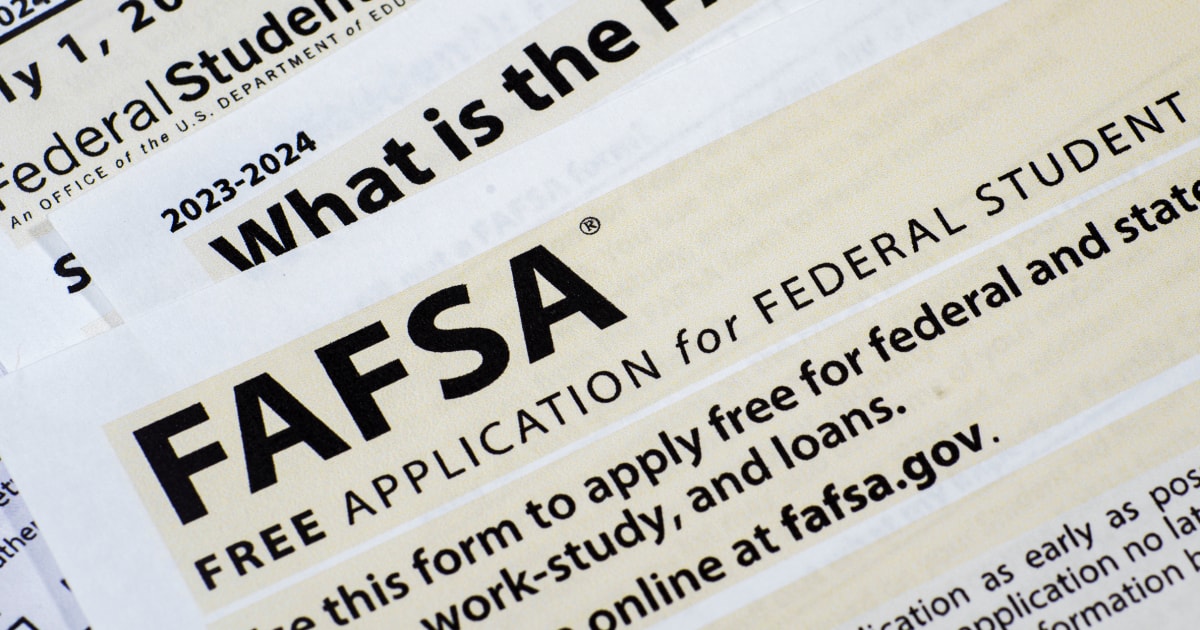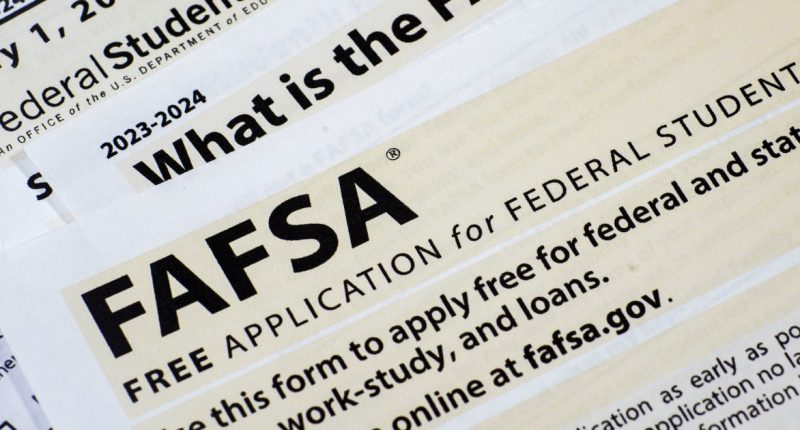
Alma Rodriguez has been trying for months to submit her son’s Free Application for Federal Student Aid, better known as FAFSA, form online. Despite trying workarounds and partial fixes to the website, she’s been unable to complete it.
Many parents filling out FAFSA forms for their children headed to college this year have experienced glitches, website crashes and monthslong delays from formula errors and other hiccups — in an application process officials had hoped to streamline with an overhaul this year.
But Rodriguez hasn’t even had a chance to run that technical obstacle course because she has no Social Security number, which until recently had prevented her from even creating an online account with the Federal Student Aid office, a crucial first step to filing an application.
“We’ve been very, very stressed,” Rodriguez said of herself and her son, Andre Pintor, who is a U.S. citizen and now staring down fast-approaching deadlines on where to attend college next fall. “Not just us as parents,” she added, “but our kids, too.”
About 5.7 million people have already submitted FAFSA forms this year, the Department of Education estimates — a roughly 35% lag behind last year at this time, according to the National College Attainment Network, which advises students on postsecondary education. Without completing a FAFSA application, students can’t receive financial aid packets from the government or their prospective schools. Many will receive that information later than usual this year.
The updated FAFSA system was intended to make applying for aid easier, in part by connecting Internal Revenue Service data with Department of Education forms for the first time. In prior years, the applications included many more questions, and a lot of mandatory data had to be input manually. Despite the complexity, families typically received their federal aid estimates within days or even hours of filing.
With the botched overhaul, though, even some parents who’ve been able to submit say it’s taking months to receive aid packets. And instead of becoming easier and more efficient, the process this year has led some applicants to turn to one another for support. Rodriguez said she connected with others in a Spanish-speaking Facebook group to try and navigate things.
“If I am really honest, I am really worried,” said Rodriguez, who moved to the United States 22 years ago from Mexico City to ensure her son would have access to higher education. She works for a cleaning service in an apartment building.
Andre has one older sibling, but he would be the first in their family to attend college, where he plans to study biology in hopes of becoming a doctor, Rodriguez said. But she can’t afford tuition without financial help.
“I haven’t let myself think that he won’t be able to access university,” she said, adding that she’s already talked to him about attending community college if she’s unable to secure enough federal aid. That would force him to reapply and transfer to a four-year institution later down the line.
Problems arose from the first day the updated FAFSA launched, on Dec. 30. When applications opened, many parents who logged on said they had to wait hours — sometimes days — just to get into the website. Some made it through the glitches, but those without Social Security numbers had no way to proceed at all initially.
Now, after officials resolved some issues, many parents and guardians have been able to verify their identities, but others are still stuck. Some report not being able to link their accounts with their child’s application form or not being able to add their signature. The delays have left many families in limbo who are eager to put down deposits at schools and apply for other aid that requires FAFSA to be completed first.
Adding to the challenges, NCAN officials say, are that some households have struggled to find interpreters at the Federal Student Aid office to assist them. While FAFSA forms come in both English and Spanish, parents who speak other languages don’t have alternative options.
The Department of Education said in a statement that it’s aware of the recent glitches preventing people without Social Security numbers from starting or accessing FAFSA since the forms first became available. The department has made updates allowing some people to complete their applications, but it acknowledged other issues remain and said it’s working to resolve those that are still causing delays.
Depending on where parents and students are in the process, officials advice different courses of action. Rodriguez said she was told to sit tight and that a fix was coming soon.
More partial fixes were released last weekend, said MorraLee Keller, senior director of strategic programming at NCAN, but their effectiveness may vary from one applicant to the next.
“What will be confusing to families is to understand sort of where they’re out on the continuum,” she said. “How do you finish what you started is the confusing piece to the families now.”
Elizabeth Ortiz’s son, Ulises, is in his second year studying kinesiology at El Paso Community College but hopes to transfer to the University of Texas at El Paso this fall. While her son is a U.S. citizen, Ortiz, a resident of Juarez, Mexico, said she has spent over three months hoping to get help with the application. She was able to confirm her identity with the agency last weekend but still hasn’t been able to submit FAFSA form completely, she said.
Sending her son to UTEP would cost more than twice what her household pays for the community college, Ortiz said, and she fears Ulises will have to pick up more work than he already does to afford a four-year school.
“We spent days trying, hours waiting for someone to answer us with every call,” she said. “It is quite frustrating.”
Source: | This article originally belongs to Nbcnews.com










